As parents of school-age children, we understand the value of high quality pre-K-12 educational systems. Indeed, the idea that all kids deserve to attend “good” schools is about as controversial as motherhood and apple pie.
There is no doubt that investments in formal education are critical to ensuring that young people gain the knowledge and crucial 21st century skills they need to succeed in college or in a career. But children actually spend just a fraction of their childhood within the confines of the classroom; a full 80% of their waking hours between the ages of zero to 18 are spent outside of school.
This often over looked statistic provides a provocative underpinning for a new joint project of the Brookings Center for Universal Education (CUE) and the recently launched Anne T. and Robert M. Bass Center for Transformative Placemaking. Rooted in decades of research on the important benefits of play for child development, the Playful Learning Landscapes Project has a simple but powerful aim: to transform everyday places into fun, engaging learning opportunities, extending education into the public realm.
Our global learning crisis
Research has shown that by 2030, over half the world’s youth—nearly 884 million young people—will not have acquired the basic secondary-level skills they need to succeed in work and life.

While this challenge is smaller in high income countries like the United States than in the developing world, even in the U.S. deep economic disparities among families are leading to large gaps in educational outcomes. Research has shown that as early as age three, low-income children tend to lag behind their wealthier peers in language and spatial skills, deficits that often stay with them as they move through school.
Most nations have tried to respond with solutions designed to improve access to quality schooling. In the U.S., access to public universal pre-K programs is growing—from 2002 to 2017, the percentage of four-year-olds enrolled in state pre-K rose from 14% to 33%. Such investments, implemented well, can positively impact student learning, including improved family functioning and coping abilities, lower stress, reduced occurrences of child abuse, and fewer child welfare encounters. These strategies are essential, but considering children spend the vast majority of time outside of a school setting, even the best such approaches can be strengthened by efforts that focus beyond the school walls.
Considering children spend the vast majority of time outside of a school setting, even the best such approaches can be strengthened by efforts that focus beyond the school walls.
This is particularly true for lower income children. While children from middle- and upper-income families may receive supplemental learning opportunities during those “off” hours—from visits to museums to other educational excursions—their lower income peers simply fall further behind. For example, recent research on the “summer slide” confirms that learning gains from school are lost in the intervening summer months, especially for students living in the poorest communities.
But what if “the other 80%” of children’s time could be leveraged for learning, not through cramming more classes into their schedules, but through play and interaction with caregivers in everyday places?
A fresh approach to everyday learning
For the past several years, Brookings has looked at how education innovations can help leapfrog or rapidly accelerate education progress so that all young people have the skills needed to thrive. One way to do this is through diversifying where and with whom children learn. The development of playful learning landscapes is one example of doing just that: consciously designing physical environments to promote children’s development and caregiver interaction, while allowing them to have fun at the same time.
This “life-wide learning” approach is taking root around the globe. For example, Urban95, an initiative of the Bernard van Leer foundation, helps public officials in many cities such as Bogota, Colombia and Azraq, Jordan imagine what life is like at 95 centimeters, the average height of a three year old, and plan accordingly. Similarly, the U.S. nonprofit KaBoom! works closely with communities to create fun and safe play spaces for children, which to date have reached over 10 million kids.
Playful learning landscapes builds on these innovative approaches by bringing the learning sciences to the design, planning, and placemaking activities underway in communities.
Better educational outcomes, stronger communities
Perhaps what is most unique about the Playful Learning Landscapes Project—and what has brought CUE and the Bass Center together around it—is that it lies at the intersection between the science of learning and transformative placemaking. At the center of that intersection is the communities themselves. Three elements characterize the playful learning landscapes approach:
Rooted in science. Research on playful learning has shown that children learn best in active, engaged, meaningful, and interactive contexts. By incorporating these principles and theory from the science of learning, playful learning landscapes helps children cultivate a range of important competencies—from spatial awareness and understanding fractions to executive function and critical thinking—by offering a unique way to foster engagement with the built environment and incorporate playful elements into public spaces and urban architecture. Playful learning landscapes also seeks to foster curiosity and a desire to learn, and can ultimately boost caregiver-child interaction, which is crucial for healthy child development and learning.
Embodies placemaking. While the chief objective of playful learning landscape is to improve children’s learning and development, it also has a powerful ability to transform physical spaces. In Philadelphia, for example, the Urban Thinkscapes installation, developed through a partnership between Temple University and the William Penn Foundation, coupled the benefits of playful learning with community development by transforming a vacant lot and bus stop. The installation places exciting learning opportunities directly in the places where people regularly go; for example, the benches of the local bus stop were turned into puzzles that both adults and children work through together. Interventions such as this can bring new life into vacant or underused lots, enhance public spaces, and bring interesting new features to parks and plazas. This reinvestment can improve the vitality of neighborhoods for residents in surrounding areas, while encouraging families and children from other communities to explore new neighborhoods.
This reinvestment can improve the vitality of neighborhoods for residents in surrounding areas, while encouraging families and children from other communities to explore new neighborhoods.
Focuses on people and community. The design, development, and ongoing maintenance of playful learning landscapes installations are done in partnership with caregivers, community members, and neighborhood businesses and organizations. In the case of Urban Thinkscapes, Temple University’s team of learning scientists, led by Kathy Hirsh-Pasek, works closely with community leaders to identify where the installation should be located, how it should be designed, who to partner with to build it, and strategies for monitoring its use. Local community groups donated the land, helped manufacture and set up the installations, and currently take part in voluntarily maintaining the site. In the spirit of community-based participatory research, the installation has also hired community members as paid data collectors. This helps to bolster neighborhood ties while providing job skills and employment to the community.
The model appears to be working. The evaluation of a wide variety of playful learning landscapes installations from across the globe has shown that with a little bit of learning sciences mixed with urban design and placemaking, child development and learning can get a big boost. From transforming bus stops and plazas to indoor “trapped spaces” like supermarkets, they have been shown to be effective in bolstering caregiver and child interactions and building children’s academic as well as 21st century skills.
The need now is to capture, codify, and spread the learning from places around the world that are employing playful learning landscapes. This is the aim of the Brookings CUE and Bass Center partnership: to help urban leaders and practitioners advance and scale evidence-based approaches to create vibrant public spaces that foster learning and caregiver interaction, bring people together to socialize and play, and generate a sense of community ownership and pride. Through this work, we hope that cities of the future become environments where all children and families can thrive.
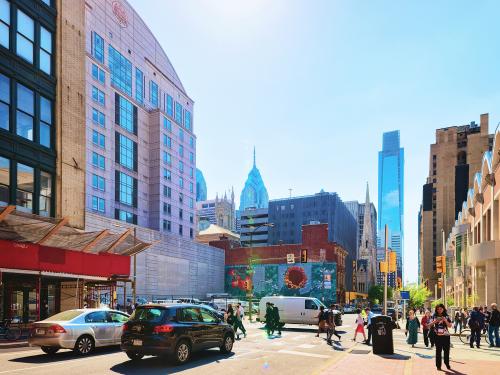
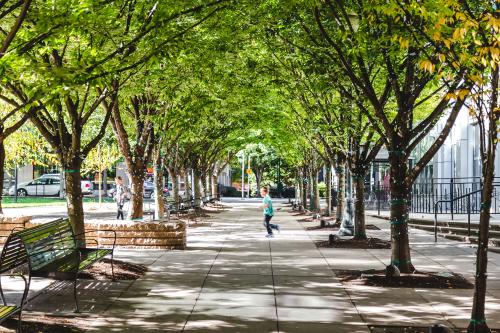
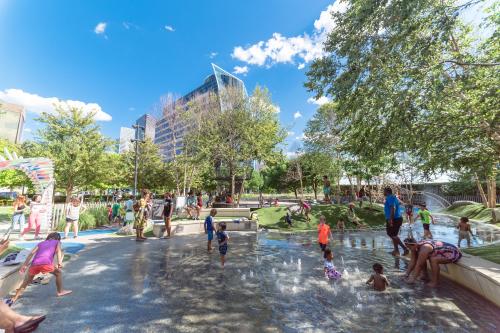
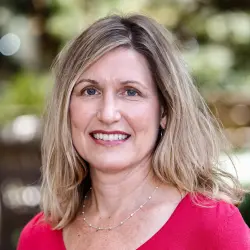

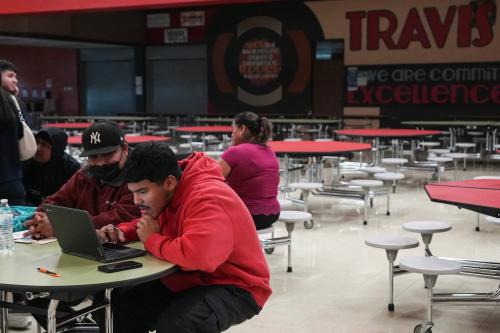


Commentary
Imagining playful learning landscapes for every community
June 6, 2019